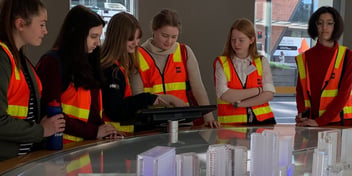Cultural lens awareness crucial to diversity practice
What’s your dominant cultural lens and how does it frame your perspective regarding diversity and inclusion in the workplace?
Presented by Melbourne Water, an Ozwater’21 panel discussion on leading diversity practice asked participants to reflect on how their dominant lens affects their perspectives and practices around diversity and inclusion.
Wara Paring Director Leon Egan said he remembers very clearly the day he decided to act on his cultural perspective — a day that inspired him to dedicate his work life to creating positive change for Indigenous people.
“February the 13th, 2008; Aboriginal people never forget this date. It's the date that then Prime Minister Kevin Rudd apologised to our Stolen Generations,” he said.
“I was working as a police officer on this particular day, at Federation Square, not to police the community, but to go and experience the apology as well.
“This day changed my life, and it changed my life forever. This was the day I realised I needed to go and work in a job where I could create positive cultural change for my people.
“The Stolen Generation has had a massive impact on my family. And, in fact, every Aboriginal person that I know, too. I chose to remove myself from Victoria Police in order to go out and share my story. I had an ability to articulate Indigenous cultural awareness training and I decided to take that opportunity.”
Egan said his cultural lens is foundational to his work, which has included training for organisations seeking to increase Indigenous participation in the workforce.
“The story I share as part of the training I conduct is around understanding why Aboriginal Australia is still where it is today. How can we support Aboriginal Australia, in more ways than just Indigenous employment?” he said.
“What is your organisation or business doing about partnering with Indigenous business? If it’s something you’re not doing, now is the time to start having that conversation.
“My role at the moment involves explaining what cultural identity means to Aboriginal Australians today. It’s all about connection — connection of our people or our mobs to the land and waterways, to the places we come from.
“Some organisations really struggle with this. They don’t think they need to understand Indigenous employees’ history, they are expected to just fit in with the organisation’s environment. But that’s totally the wrong way around.”
Monash Sustainable Development Researcher Dr Paul Satur said the water sector is uniquely positioned to make a difference in terms of diversity and inclusion, but that it is important not to make assumptions about peoples’ cultural context.
“We, as stewards of a water system, have a capacity to deliver value. And the way in which we deliver value has different impacts for different people. The really fundamental thing about diversity is the opportunity to be creating an enabling environment for participation,” he said.
“We have expertise in the technical delivery of water services, liveability and resilience, but we're not experts in people's contexts. And we often risk making assumptions about what those contexts are, whether consciously or subconsciously, in our practice.
“If we can build diversity and inclusion lenses into our organisations, into our operations, into our practises, we can start to more actively engage in the diverse context of the different communities and different people that we're servicing.”
Melbourne Water Diversity and Inclusion Senior Adviser Tara Zwaans said it is also crucial to consider what is being achieved by building diversity and inclusion goals within a business.
“I tend to approach my work by asking: what am I actually trying to achieve here?” she said.
“There are certainly business benefits of diversity. Yes, we need inclusion to achieve things, but what are we actually trying to do? And really, diversity is about shifting our society, more broadly, to a more inclusive society where people do have more quality of life and better outcomes.”
Zwaans said Melbourne Water’s diversity strategy has recently shifted from a purely internal focus to also include an external focus.
“We aim to be more inclusive at Melbourne Water in terms of increasing the diversity of our workforce internally, but we have recently turned to how we can have an external focus too,” she said.
“This includes who we choose to partner with and how we can create green spaces for the communities we serve. This is something that came to the fore during COVID-19. There were some people within the five kilometre radius that couldn't access green spaces.
“Inclusion requires us to consider these parts of the community and how we can make sure they have equal access to the amenities we all deserve to have access to.”

